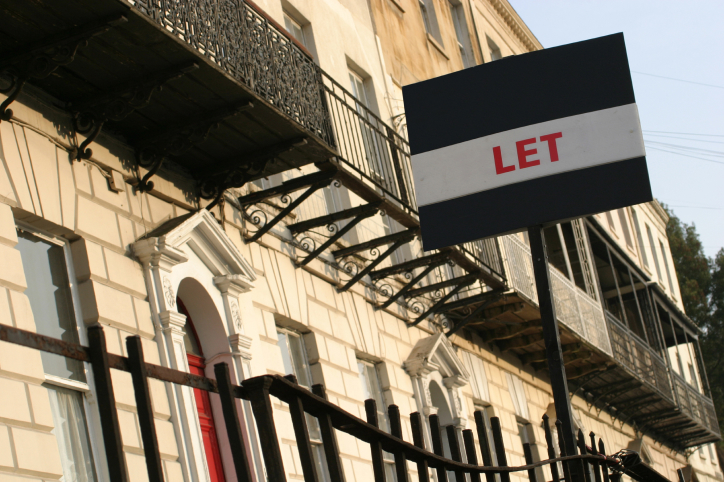Managing Large Lettings Portfolios: an early insight into BTR suburban communities
LRG is responsible for the management of many portfolios of rented properties. Some pre-date BTR by as much as 50 years, but nevertheless provide an interesting insight into the evolution of BTR, specifically future BTR suburban communities. Together with our clients we have used this insight, and our growing knowledge of this market, to benefit the way in which these schemes are developed.

And so while these communities were not designed as ‘BTR’ under today’s definition, they might be considered worthy of the title ‘retrofitted-to-rent’.
An early example of a BTR suburban community
The largest community of rental properties managed by LRG is a section of Arborfield, a former army garrison in Berkshire which is now occupied by both MOD and civilian tenants.
The MOD site has much in common with a BTR suburban community because, as a base for army families, it was designed with community cohesion at its heart. So Arborfield already benefits from open spaces and playing grounds in the way that other housing developments of its time did not. The wide-ranging community spaces have potential to be let out for GPs surgeries, childcare facilities, play centres, gyms, cafés, restaurants not to mention the generous open spaces which could provide community allotments. LRG’s estate management team oversees the community relations as well as the day-to-day management. We have organised various local events which have been well received by the community.
With good schools, large houses and good proximity to London, Arborfield attracts a demographic not unlike that which is envisaged for future BTR suburban communities. Its popularity is demonstrated by its occupancy rate: a consistent 98%.
Common features
Another commonality between this scheme and BTR is churn. In such schemes it is important that fixtures and fittings are durable and can be easily replaced.
A similar approach is taken to the provision of shared open spaces – which can correlate with a potential reduction in the size of individual gardens. Similarly, on such schemes where a clubhouse or multi-purpose community hall exists, home design might be impacted: for example, the requirement for open plan is reduced if an alternative location is available to use for parties.
We may see other subtle similarities in the design of individual homes: ample storage space will be provided to prevent tenants from installing shelving or large pieces or furniture which can damage paintwork; from flooring to blinds, fittings will be durable to avoid the need for regular replacements, and internal decoration will be determined by the selection of paint colours, tiles and flooring materials held in stock onsite, to make the turnaround between tenants as cost-and time-efficient as possible. Developers of new schemes would also be wise to install EV changing points and renewable energy features for each property (unless provided communally) to avoid doing so on a house-by-house basis.
An increasing role for corporate investment
There has been a long-term shift towards private renting during the 21st century, with the number of households in this tenure increasing by 93% in the last 15 years (compared to growth in owner-occupied households of just 3%). In London, private renting is now the largest single tenure, accounting for 28% of all households. But supply has struggled to meet demand: in February 2022, Propertymark members reported that an average estate agent’s branch had just five properties available to rent. This was a 44% decrease from a four-year average of nine.
This is the result of recent regulatory changes impacting on private landlords, including the Renters Reform Bill, which has been seen by professional bodies representing landlords as ‘shocking’, ‘damaging’ and ‘unworkable’. The transfer of rental properties into corporate ownership (which is possibly demonstrated by John Lewis’s move into the BTR sector) coincides with commercial units increasingly becoming redundant and being repurposed by their corporate landlords as rental homes.
There is also increasing evidence of housebuilders releasing land or homes, either through their own ownership or through a sale to an institutional investor, to capitalise on the growing market. Where this transaction takes place prior to planning consent, there are considerable opportunities to shape the product to the rental market – that is, to create genuine BTR suburban communities.
Conclusion
Inevitably there will be different models of BTR suburban communities throughout the country, just as there are with student accommodation or later living schemes. Those which attract premium rents will provide a premium service, and an ‘economy’ model may exist in parallel. But a high level of effective management will be common to all schemes, since efficient management is financially prudent and essential to good tenant relations.
So, retrofitted, can the second-hand market function as BTR suburban communities? True BTR properties will feature different approaches to design, layout and functionality to an extent and this cannot be fully achieved post-build. But with the intrinsic values of BTR being service-related, rather than literally cemented in bricks and mortar, it is possible that existing schemes be adapted to include the many benefits of BTR.
